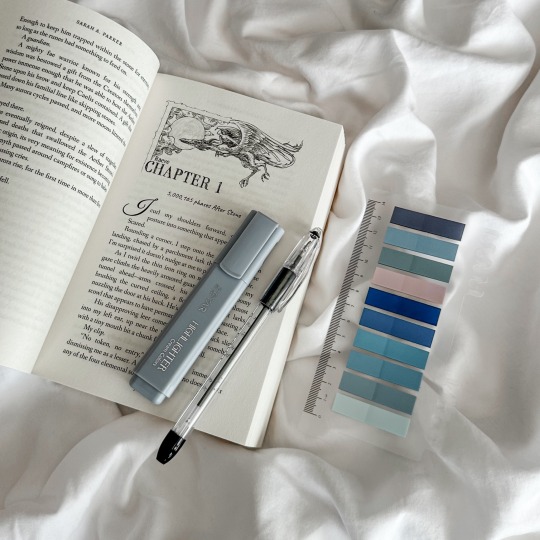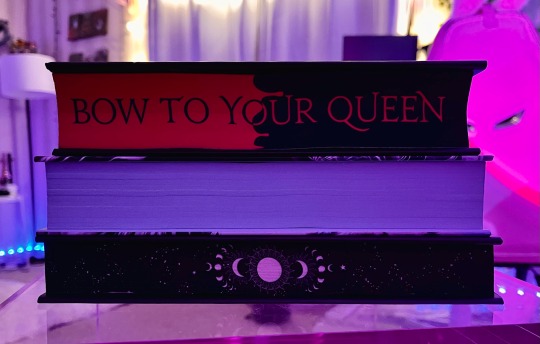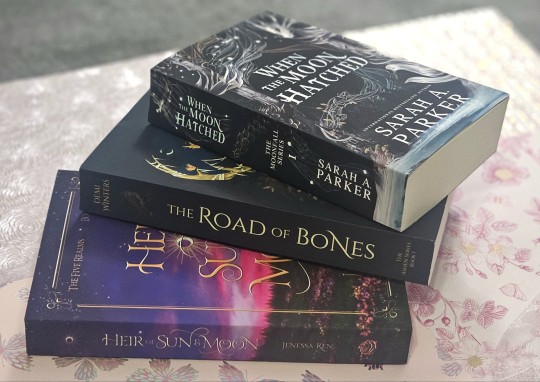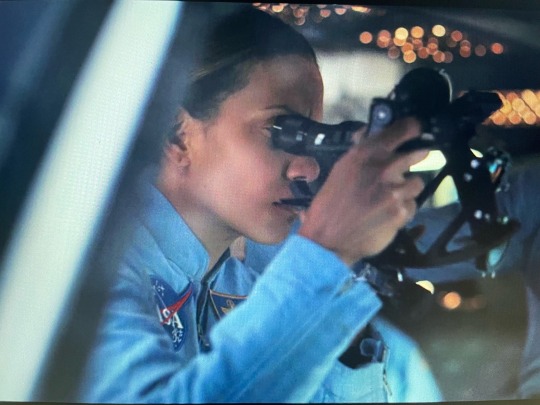#moonfall series
Explore tagged Tumblr posts
Text

✩🌙🐉Review:
736 pages of everything I’ve ever wanted in a thrilling fantasy romance!
“When the Moon Hatched” follows Raeve, a valued Elding Blade of the rebellion group Fíur du Ath, after she is captured by a renowned bounty hunter employed by The Crown. She finds herself at the mercy of the Guild of Nobles—a group of dual-beaded elementals who intend to turn her into a political statement. That is until Kaan Vaegor stumbles upon her. Echoes of the past race between them. There’s more to their story than meets the eye, but some truths are too poisonous to swallow.
This book is a vibrant tapestry woven together with lyrical prose, an immersive world, a unique magic system, mysterious creatures, complex characters, and a beautifully devastating romance. I was captivated by every single thread to the point that I became so deeply entangled in the book that I was afraid to reach the end, because it meant parting the world and the characters in it.
The first half of “When the Moon Hatched” is very slow-paced, which might be a deterrent to some, but was actually helpful for me as I adjusted to Parker’s intricate, dense world-building and parsed through her world’s rich history. Referring to the glossary and map was especially helpful and enriched my reading experience.
Once the pacing picked up, I was gripped by the plot and the multiple perspectives I read from that contributed to its unfolding. I particularly love Raeve’s character. She is a strong, sassy, female protagonist that takes matters into her own hands and doesn’t allow anyone to make her feel less than. Her chemistry with Kaan is undeniable and I really enjoyed how it took her by surprise. She tries to brush it off, but not even their witty banter can mask the tension and longing behind every word, touch, and glance between them. The two are slow to act on their feelings, despite my suffering, but the payoff is a balm to the soul.
Parker really got me with the shocking revelations made in the final few chapters. I anxiously await “The Ballad of Falling Dragons”!
Cross-posted to: Instagram | Amazon | Goodreads | StoryGraph
#when the moon hatched#moonfall#moonfall series#sarah a parker#raeve#kaan vaegor#forbidden romance#forbidden love#adult fantasy#adult romance#forced proximity#morally grey characters#dual pov#royal romance#fantasy romance#romantasy#spicy books#booklr#book blog#book blogger#bookish#book review#bibliophile#bookaholic#book rec#bookworm#book recommendations
46 notes
·
View notes
Text
I don’t want to finish “when the moon hatched” bc I’ll miss raeve and kaan so much☹️ my babies☹️
9 notes
·
View notes
Text


new to my library 🖤
#booklr#bookish#library#book blog#court of the vampire queen#katee robert#when the moon hatched#moonfall#moonfall series#sarah a parker#the stars are dying#chloe c peñaranda#collectors edition#fantasy romance#fantasy#romantasy
7 notes
·
View notes
Text
‚If Raeve were Micheal Scott from The Office’-Memes




#when the moon hatched#moonfall#moonfall series#sarah a parker#raeve#elluin neván#kaan vaegor#Books#ya books#meme#ya fantasy#new adult#raeve x kaan#the ballad of falling dragons
13 notes
·
View notes
Text
the book picks up so well after like 10 chapters and now i can’t find it in myself to put it down! 😩
#when the moon hatched#sarah a parker#moonfall series#raeve#kaan vaegar#book tumblr#booklr#current read#now reading
13 notes
·
View notes
Text
When the Moon Hatched Monsters
Just finished my latest buddy read, When the Moon Hatched by Sarah A. Parker. Like most romantasy, I ended up liking the fantasy more than the romance lol. But not so much the dragons. They’re everywhere in fantasy and it’s hard to make them stand out. Like, most of the time I prefer “girly” dragons (as discussed here) from children’s media. Because they’re almost always more interesting than standard fantasy dragons.
But it had some great original (takes on) creatures! Parchment larks are basically sentient paper airplanes. Ticks can carry and infect dragons with rabies. It’s as sad and as scary as it sounds. One dragon gets euthanized.
There’s a monster called a trogg who’s humanoid and she eat objects like chairs and jewelry.
Orifices in her palms secrete bioluminescent mucus. Strands of it decorate her lair’s ceiling. The mucus is made of memories.
My favorite is the octimar! As you can guess, it’s a cephalopod. An octimar can “blend almost entirely with [its] surroundings” (pg. 548). It’s eyeless, translucent, and has a brain in its head, instead of in its tentacles. Raeve describes teeth and not radula, so I like to think it’s also intentionally more humanoid. “Octimars can weave promises upon flesh, bind them to blood, body, and soul.” The one she encounters was used in gambling (i.e., guarding gold coins).
#Tawney talks#When the Moon Hatched#Sarah A. Parker#Moonfall#Moonfall series#minors do not interact#entomophobia#arachnophobia#rabies#euthanasia#chapodiphobia#romantasy#monster#dragon#parchment lark#trogg#octimar#WTMH#WTMH book
4 notes
·
View notes
Text

Mini haul of books I got my friend for her birthday. I hope she loves these books as much as I do.
#when the moon hatched#sarah a parker#sarah a. parker#the road of bones#demi winters#the moonfall series#the ashen series#heir of sun and moon#heir of sun & moon#jenessa ren#the five realms series#books#book haul
46 notes
·
View notes
Text
"What do you want, Elluin?"
"You." I turn my head, open my eyes. Hey lost in Kaan's ember gaze as a smile fills my cheeks. "Forever."
The vision loosens its hold on me, and my knees buckle. I fall to the ground amongst a litter of feathers, gasping for breath that won't come, hands gnarled into claws that drag at my chest. As I realize with a soul crushing finality the reason I've been drawn to this point since the moment I opened the shutters.
This place isn't the relic of somebody else's love....
It's ours.
-When The Moon Hatched
#quotes#book quotes#literature#books & libraries#life quotes#relationship quotes#love quotes#sarah a parker#the moonfall series#when the moon hatched#raeve#elluin nevan#kaan vaegor
3 notes
·
View notes
Text
When The Moon Hatched spoilers ⚠️
me, the entire time i’m reading: can we please get back to Kyzari and her whole thing?!?!
me, reading the last few chapters: nevermind, can we forget i read this? i’d like to go back to ignorance, thank you.
i am…unwell. that was certainly an ending. how am i supposed to cope with this for an entire YEAR before the sequel comes out?!?!
#bookish#booklr#book blog#books and reading#bookworm#reading#bookblr#books#when the moon hatched#kyzari#sarah a parker#the moonfall series
4 notes
·
View notes
Text
We all beg 😂😂🙏

Please🙏🙏😭
I'm begging for any kind of smut (or not) fanfic about Patrick Wilson and all his characters.
With hardcore sex, face fucking, cumshot, virgin reader, age difference, height difference, angry sex, dom/sub, spanking, face fucking, pussy slapping, cum swallowing, orgasm denial for her and him… (literally everything) Use your creativity, surprise me. I need, I accept everything, please🙏🙏😭♥️
And if someone could make some Patrick Wilson wallpapers… that would be amazing!! 😍🤩🥰✨



#patrick wilson#patrick wilson smut#patrick wilson x you#patrick wilson imagine#ross humboldt#agent lynch#ed warren#the conjuring series#insidious#orm marius#josh lambert#patrick wilson fanfic#all patrick wilson characters#dan dreiberg#aquaman the lost kingdom#nite owl smut#dan dreiberg smut#nite owl#aquaman#ocean master#ed warren smut#ed warren x you#ao3 fanfic#ao3 writer#ao3feed#in the tall grass#archive of our own#writers on tumblr#fanfic#moonfall
35 notes
·
View notes
Text

Medusa Spitblossoms Medusa: A Mythological Tale of Maiden to Monstrosity
Medusa, a name that evokes both fascination and terror, is one of the most intriguing figures in Greek mythology. This captivating Gorgon, known for her hair of serpents and the ability to turn mortals into stone, has been the subject of countless artistic interpretations, symbolizing power, femininity, and the complex nature of humanity. Although Medusa is not considered a goddess, she is an important and unique character from Greek mythology, specifically one of the Gorgons, three sisters known for their monstrous appearance.
While Medusa is a notable figure in Greek mythology and has been the subject of various artistic interpretations and symbolism, she is not worshipped as a goddess in the traditional sense. Over time, Medusa myth has been used as a symbol to protect and ward off the negative, representing a dangerous threat meant to deter other dangerous threats, an image of evil to repel evil. In this blog post, we will delve into the myth of Medusa and explore the profound symbolism associated with her enigmatic persona.
Medusa, a name that evokes both fascination and terror, is one of the most intriguing figures in Greek mythology. This captivating Gorgon, known for her hair of serpents and the ability to turn mortals into stone, has been the subject of countless artistic interpretations, symbolizing power, femininity, and the complex nature of humanity. Although Medusa is not considered a goddess, she is an important and unique character from Greek mythology, specifically one of the Gorgons, three sisters known for their monstrous appearance.
While Medusa is a notable figure in Greek mythology and has been the subject of various artistic interpretations and symbolism, she is not worshipped as a goddess in the traditional sense. Over time, Medusa myth has been used as a symbol to protect and ward off the negative, representing a dangerous threat meant to deter other dangerous threats, an image of evil to repel evil. In this blog post, we will delve into the myth of Medusa and explore the profound symbolism associated with her enigmatic persona.
The Mythical Origins of Medusa:
Medusa Greek mythology was once a beautiful mortal woman with flowing hair. However, due to a series of unfortunate events, she was cursed by the goddess Athena, transforming her into a monstrous creature. Her once luscious locks were replaced by serpents, and her gaze became the deadly weapon that turned any who looked upon her to stone. This tale of transformation and divine punishment carries deep symbolic meaning, resonating with themes of beauty, envy, and the consequences of hubris.
Medusa Spiritual Meaning:
While Medusa mythology is often depicted as a terrifying monster, she also embodies a potent symbol of feminine power. Her serpentine hair represents primordial wisdom, connected to the chthonic forces of nature and the untamed aspects of femininity. Medusa challenges traditional notions of beauty and subverts the male gaze, offering an alternative archetype of strength and resilience for women throughout history. In modern times, she has become an icon for female empowerment, encouraging women to embrace their unique qualities and reclaim their narrative.
Medusa in Art and Literature:
Throughout the ages, artists and writers have been captivated by Medusa's enigmatic allure, immortalizing her in various forms. From ancient Greek pottery to Renaissance paintings and contemporary sculptures, Medusa's image continues to inspire creative interpretations. Notable works such as Caravaggio's "Medusa" and Bernini's "Medusa Shield" showcase the enduring fascination with this mythological figure. Furthermore, Medusa's presence in literature, from Ovid's "Metamorphoses" to contemporary novels, reflects her enduring relevance as a complex symbol of power, desire, and the human condition.
Medusa as a Metaphor for the Human Psyche:
Medusa symbolism as a figure of feminine power, Medusa also represents the intricate workings of the human psyche. The concept of "petrification" associated with her gaze can be interpreted as the fear of facing our deepest fears and desires, the paralysis that comes with inaction, or the consequences of avoiding self-reflection. Medusa reminds us that embracing and integrating our shadow selves is a crucial step towards personal growth and self-actualization.
Medusa and Poseidon
Medusa greek mythology was described as a beautiful mortal woman before she was cursed. She was said to have flowing golden or auburn hair, which was considered her most striking feature. Her beauty was so captivating that she caught the attention of various suitors and even garnered the interest of the sea god Poseidon.
However, after an encounter with Poseidon in the temple of Athena, Medusa's fate took a tragic turn. According to the myth, Poseidon raped Medusa within the temple of Athena, defiling the sacred space. As a result of this violation, Athena punished Medusa rather than Poseidon. The enraged Athena cursed Medusa, transforming her appearance into a grotesque form to punish her. Her beautiful hair was turned into serpents, her eyes became glowing and petrifying, and her once attractive countenance became monstrous.
It's important to note that descriptions of Medusa's appearance can vary in different interpretations and artistic depictions. Artists and storytellers throughout history have depicted Medusa in various ways, emphasizing different aspects of her monstrous transformation. However, the common thread in the myth is that she was initially a beautiful woman who was tragically transformed into a horrifying creature as a result of a curse bestowed upon her.
Perseus and Medusa
The story of Medusa and Perseus is a well-known tale in Greek mythology. It involves the hero Perseus and his quest to slay the monstrous Gorgon Medusa.
Perseus was the son of Zeus, the king of the gods, and Danaë, a mortal woman. When Perseus was a baby, an oracle prophesied that he would one day kill his grandfather, Acrisius. To prevent this, Acrisius locked Danaë and Perseus in a chest and cast them into the sea. They were eventually rescued by a fisherman and brought to the island of Seriphos, where they lived.
As Perseus grew older, King Polydectes of Seriphos became infatuated with Danaë and desired to marry her. Perseus, reluctant to see his mother wedded to the king, accepted a dangerous task proposed by Polydectes. The king requested the head of Medusa, the only mortal Gorgon, as a gift from Perseus.
The Gorgons, Medusa included, were monstrous creatures with snakes for hair and the power to turn people to stone with their gaze. Medusa, in particular, possessed this petrifying ability. To aid him in his quest, Perseus received various gifts from the gods, including a reflective shield from Athena, winged sandals from Hermes, and a helm of invisibility from Hades.
Using these divine gifts, Perseus embarked on his journey. He managed to find the three Gorgons, including Medusa, in their lair. Avoiding direct eye contact with Medusa, he used his shield as a mirror to observe her without turning to stone. With a swift strike, Perseus beheaded Medusa while she slept. The winged horse Pegasus and the giant Chrysaor, both born from Medusa's blood, emerged from her severed neck.
On his way back, Perseus encountered various adventures, including rescuing Andromeda, a princess, from a sea monster. Eventually, he returned to Seriphos and used Medusa's head as a weapon against his enemies. In one incident, he petrified King Polydectes and his court, avenging his mother's mistreatment.
Perseus later reunited with his grandfather, Acrisius. However, the prophecy came true when Perseus accidentally killed Acrisius during a discus-throwing contest. As a result, Perseus fulfilled the prophecy, but his heroic feats brought him renown and established his place in Greek mythology.
The myth of Medusa and Perseus is often seen as a tale of heroism, triumph over monstrous forces, and the fulfillment of prophecies. It showcases Perseus' courage, resourcefulness, and divine assistance in his quest to slay Medusa and the subsequent events that unfolded as a result.
Medusa's Children
According to Greek mythology, Medusa goddess did have offspring. After Perseus, the hero who beheaded Medusa, two creatures emerged from her severed neck: Pegasus and Chrysaor.
Pegasus was a winged horse known for his incredible speed and association with poetry and inspiration. He became a famous mythological figure in his own right and was tamed by the hero Bellerophon, who rode him on various adventures.
Chrysaor, on the other hand, was a giant or a warrior with a golden sword. His name translates to "Golden Blade." Chrysaor is not as widely known or featured in mythology as Pegasus, but he is often mentioned as the sibling of the winged horse.
It's important to note that Medusa's offspring were not conceived in the traditional sense but were born from her blood or the remnants of her body after her death. They played significant roles in subsequent mythological narratives and were seen as the legacy of Medusa, carrying aspects of her power and essence.
Was Medusa Immortal?
In Greek mythology, Medusa was not immortal. Like many other figures in Greek mythology, she was a mortal who possessed certain abilities and encountered divine beings. Medusa was originally a beautiful mortal woman, but due to a curse placed upon her by the goddess Athena, she was transformed into a monstrous creature with snakes for hair and the ability to turn people to stone with her gaze.
Medusa's immortality, or lack thereof, can be interpreted differently depending on the version of the myth. Some sources suggest that she was mortal and eventually slain by the hero Perseus, who used a mirror-like shield to avoid looking directly at her and beheaded her while she slept. In this interpretation, Medusa's death implies that she was not immortal.
However, other versions of the myth propose that Medusa, along with her sisters, possessed a degree of immortality. They were depicted as beings who could not be killed conventionally due to their monstrous nature. Their immortality was tied to their monstrous form, which persisted despite any injuries inflicted upon them. It was only through a specific act, such as Perseus using his reflective shield to decapitate her, that Medusa could be defeated.
Overall, the concept of Medusa's immortality can vary depending on the interpretation of the myth. In some versions, she was mortal and eventually slain, while in others, she possessed a form of immortality that required a specific method of defeating her.
Is Medusa a Goddess?
Medusa is not a goddess; she's a figure from Greek mythology. She was originally a beautiful woman turned into a Gorgon with snakes for hair. Medusa is often associated with her petrifying gaze.
What Does Medusa Symbolize?
The Medusa meaning is multifaceted and can be interpreted through various lenses, including mythology, psychology, and symbolism. Here are a few key aspects of the meaning associated with Medusa:
What Does Medusa Represent?
Transformation and Metamorphosis: Medusa's story revolves around a significant transformation. She was once a beautiful mortal woman who, due to a curse, became a grotesque figure with snakes for hair and the power to turn people to stone. Her tale represents the concept of metamorphosis, both physically and symbolically. It reflects the potential for profound changes in one's life and the transformative power that lies within.
Complexity and Duality: Medusa embodies the complexity and duality of human nature. On one hand, she is depicted as a monstrous figure capable of petrifying others. On the other hand, she was once a beautiful woman who faced unjust punishment. This duality reflects the intricate nature of humanity, showcasing how individuals can possess both light and dark aspects within themselves.
Reflection and Self-Exploration: Medusa's gaze, which turned people to stone, can be seen as a metaphor for self-reflection and the consequences of avoiding or denying one's own truth. Medusa prompts individuals to confront their inner fears, desires, and shadows. Her story encourages deep introspection, acceptance, and the integration of all aspects of oneself.
Archetypal and Symbolic Representation: Medusa has become an archetypal figure, representing various themes and symbols. These include femininity, power dynamics, wisdom, protection, transformation, and the embodiment of the wild and untamed forces of nature. Her symbolism transcends time and continues to resonate with individuals seeking to understand and express different facets of the human experience.
Medusa in Modern Witchcraft
Medusa's role in witchcraft varies depending on the specific tradition or belief system being explored. It's important to note that Medusa herself is a figure from Greek mythology, while witchcraft encompasses a wide range of practices and beliefs that can be found in different cultures throughout history.
In some modern forms of witchcraft, Medusa energy may be invoked or revered as a symbol of feminine power, transformation, and protection. She is seen as a representation of the wild, untamed aspects of nature and the feminine divine. Some witches may draw inspiration from her story to connect with their own inner strength, resilience, and the ability to face challenges.
In certain magical practices, Medusa's image or symbolism might be incorporated into rituals, spells, or charms for specific purposes. For example, her serpentine hair might be seen as a potent symbol for the awakening of kundalini energy or as a representation of the transformative power of the serpent archetype.
It's essential to recognize that witchcraft is a diverse and multifaceted spiritual path, and individuals or groups within witchcraft traditions may interpret and incorporate Medusa's symbolism differently. Medusa's role in witchcraft is often subjective and open to personal interpretation, reflecting the practitioner's unique beliefs and intentions.
27 notes
·
View notes
Text
pinned post time baby
Hello internet! I'm N0va and welcome to my blog
-------------
Things about my blog
I like to post art here
I roleplay (I have two blogs dedicated to oc/aus. @malwaresilly and @sugarsweet-ask-blog )
I am obsessed with Moths, the dca, tsams and all it's other channels and Infinity Train
I can't donate to anything as I don't have the money to
I don't do commissions
if you send an ask asking about things such as my age or anything of the similar, I will delete it no matter how innocent the intent is. I keep all personal information to myself
~~~~~~~
things to know
I run a YouTube channel (for all/ most audiences) called (now) The Bumble and Rosy show. Which includes an Au series called The Moonfall au (currently discontinued )
I draw some pretty weird stuff but I'll try to tag tw and cw correctly if I do-
My tsams au , The star Hider au (which is Lunar centric)
(Ask rules for the Bumble and Rosy ask series for my yt)
most art posts will be tagged with #bumble draws
(I also have an AO3 most of them are old cuz writing is hard-)
My sona's ref sheet
32 notes
·
View notes
Text

Sunrise does have a twin brother, Moonfall.
Moonfall is more aggressive than him.
TSLTA concept belongs to me and @shadzytarts!
You can find the series here (Rated M-E) or in my pinned post!
Yes, those "wings" can help him glide/kind of fly, too.


#tslta#tslta au#mafia au#fnaf au#traditional art#dca au#fnaf moon#tslta moonfall#moonfall#crytpid au#the solstice leading the aurora
49 notes
·
View notes
Text
Moonfall also gets points for having the 'secret before earth humans' NOT BE WHITE
Smart Idea in a (Fun) Dumb Movie
Moonfall (2022) is an objectively dumb movie. That I have seen three times

That is, until this two second scene at 1:10:40. Blink and you’ll miss it
For context, in this scene, the characters are unable to use electricity devices. Ignore for a moment the human body contains electrical impulses. Here, the characters are attempting to navigate to the moon for Moonfall-ing purposes. However, they need to do so without modern electrical devices
Their solution: a sextant


This is secretly brilliant and must be the result of the NASA or other science consultants
NASA actually has studied using a sextant for manual navigation in the event of a catastrophic electrical failure as recently as 2018 on the International Space Station
Although I can’t find a clear image of the prop used in the movie, it looks eerily similar to the real Astra III sextant that NASA uses


The flight instrument was a Celestaire Astra III Professional hybrid brass/aluminum sextant, serial number 1183118.
#honestly moonfall would make a badass space opera book series#it's kind of a shame it was a movie first and that can't happen#moonfall is one of those movies that does not make sense over all but it's FUN#like armageddon or the day after tomorrow or 2012#it would have been so much more of a hit if it had been made like 10 years ago#movies
70 notes
·
View notes
Text
I AM SO CONFUSED WHAT IS UP WITH KAAN ALWAYS PLAYING WHITE KNIGHT FOR RAEVE
and to think he’s one of the kings!!!
#when the moon hatched#sarah a parker#kaan vaegar#moonfall series#book tumblr#booklr#current read#now reading#currently reading#fantasy#romance#romantasy#dragons
3 notes
·
View notes
Text
youtube
Title: Moonfall
Music: Florence and the Machine - Rabbit Heart (Raise it Up)
Anime: Tenkū no Escaflowne
Why do I recommend it?: A good match of music and scenes for a video that will bring you through the story of this old series.
#Tenkuu no Escaflowne#Tenku no Escaflowne#The Vision of Escaflowne#Escaflowne of the Heavens#Youtube
3 notes
·
View notes